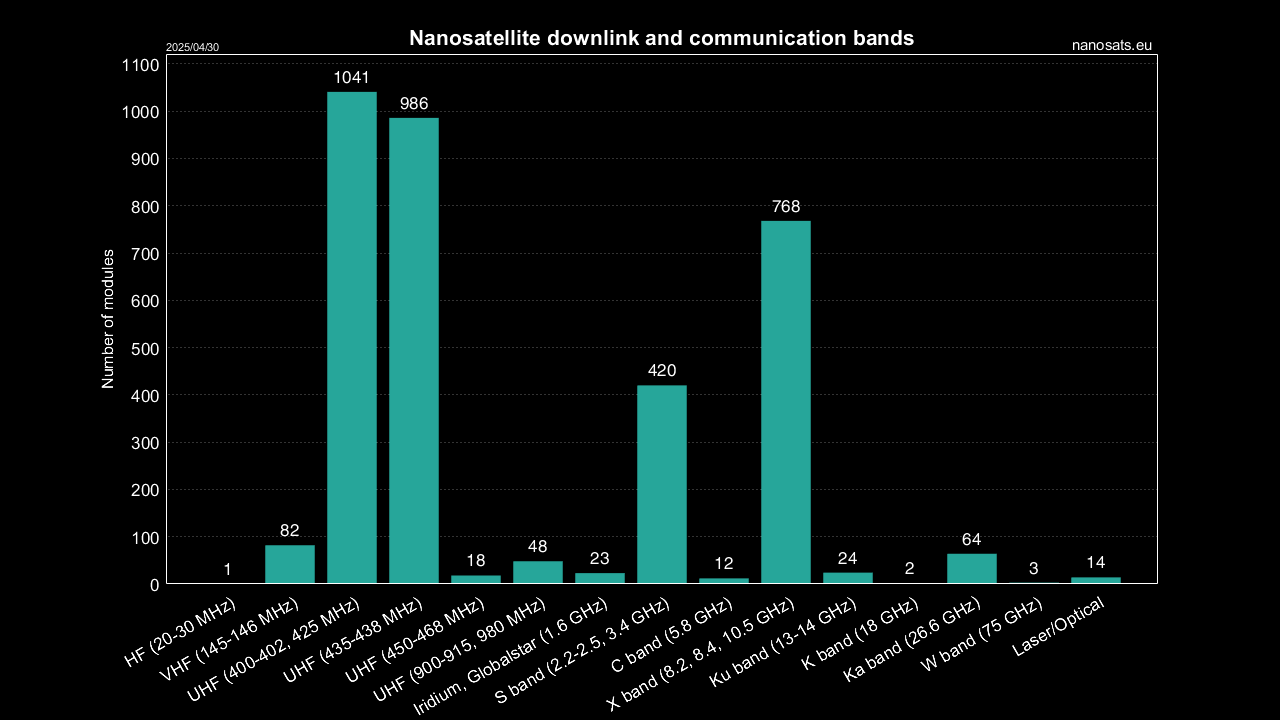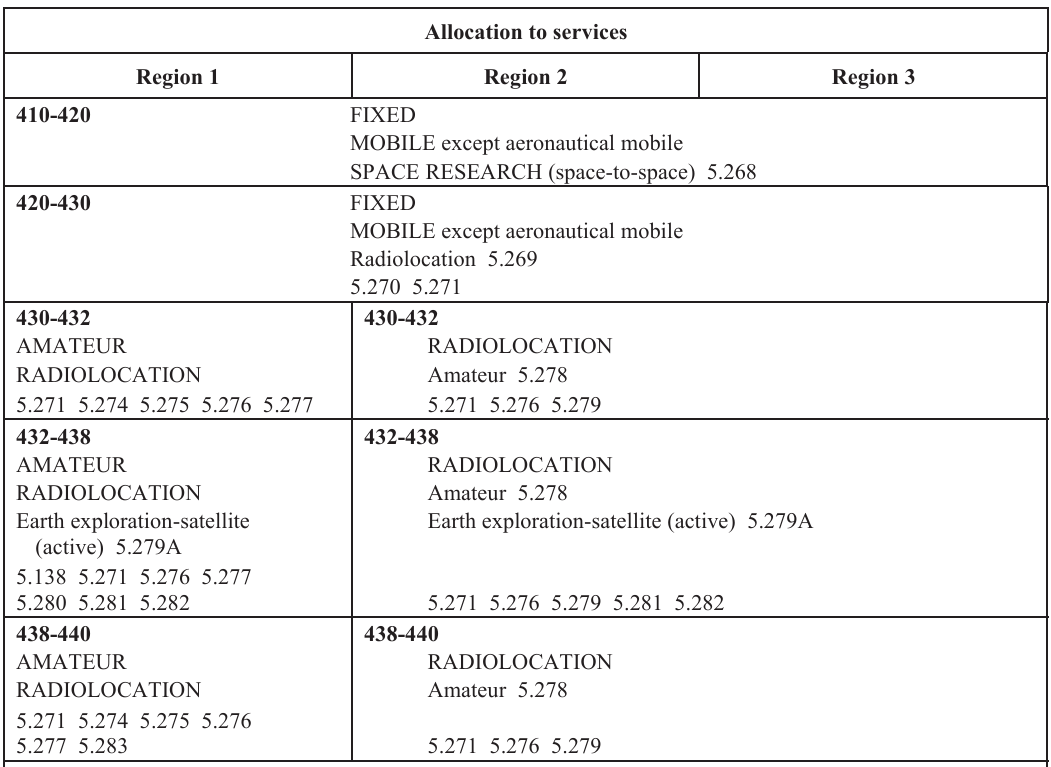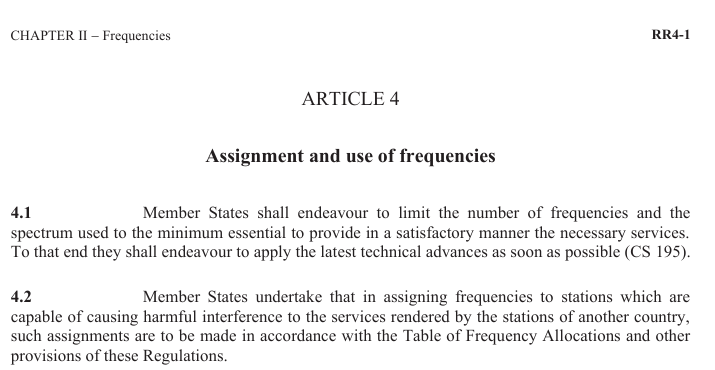The 435-438 MHz UHF Amateur satellite allocation is a global workhorse of the Amateur-satellite service. As shown in the figure below, it is second only to the commercial (non-Amateur) UHF spectrum in terms of utilization by nanosatellites (CubeSats) only.

This 435-438 MHz allocation has many desirable characteristics. Antenna sizes for this band are practical, propagation characteristics are favourable, and there is a great deal of easily accessible hardware and software from the community to support use.
Another desirable feature is that the allocation, albeit as a secondary one, exists globally. A secondary allocation signifies that a particular radio service (e.g. the Amateur-satellite service) can use a specific frequency band, but it does so with less protection than a primary service. This means a secondary service must not cause harmful interference to primary services and cannot claim protection from interference caused by primary services.
The Canadian Table of Frequency Allocations (CTFE) and the International Telecommunication Union (ITU) Radio Regulations (RR) both permit this secondary allocation under footnote # 5.282, illustrated below with a relevant excerpt from the Chapter II Article 4 of the ITU RR .


Radio spectrum users have a long history of being grouped into categories called radio services, defined by Article 1.19 of the ITU RR. All of these are defined in Chapter 1 Article I of the same document, with the radiolocation and Amateur service being examples. Under Article 4.2 of the ITU RR, countries are required to respect this grouping, and allocate spectrum to interested users accordingly.

Commercial interests have a long history of encroaching on the Amateur spectrum. The UHF Amateur satellite allocation is no exception to this, with the latest development in this area being a petition to the Federal Communication Commission (FCC) by the AST & Science LLC (AST), an American provider of commercial direct to cell satellite communication services, to modify its existing license to authorize an additional 243 satellites in their constellation to utilize the 430-440 MHz band for command and control purposes, both in the space to Earth and Earth to space directions.
At the moment, in response to this petition, the FCC is seeking comments and feedback from interested parties on this matter, due July 25, 2025. AST’s petition is contrary to Article 4.2 of the ITU RR as their activities do not fall within the scope of radio services allocated to the 430-440 MHz band (their constellation belongs to the mobile-satellite service), and it has significant potential to disrupt the use of the much used 435-438 MHz allocation, and associated Amateur satellite activities.
AST’s petition claims to rely on a no protection/no interference basis exemption allowed by Article 4.4 of the ITU RR, shown below. However, AST fails to demonstrate how the addition of command and control activities for 243 satellites will not interfere with Amateur radio activities conducted in accordance with national and international regulations.

As a result, AMSAT-CA strongly opposes this petition, and stands with the global Amateur radio community and Amateur radio operators such as Mario Lorenz DL5MLO in respectfully petitioning the FCC to deny this application with regard to the above mentioned use of the 430-440 MHz band.
